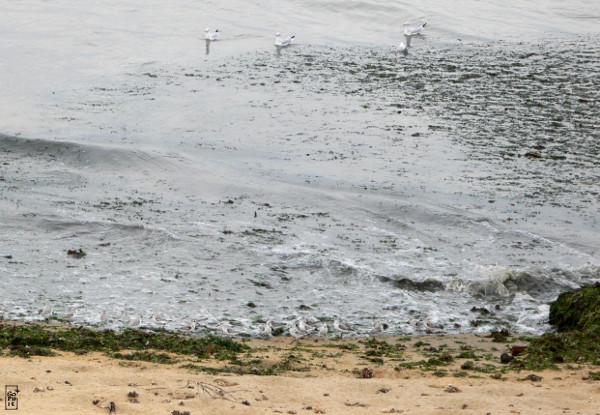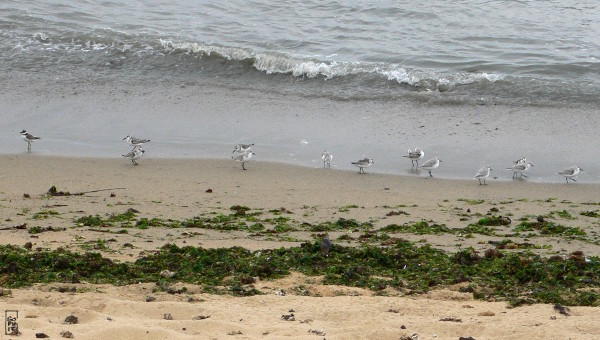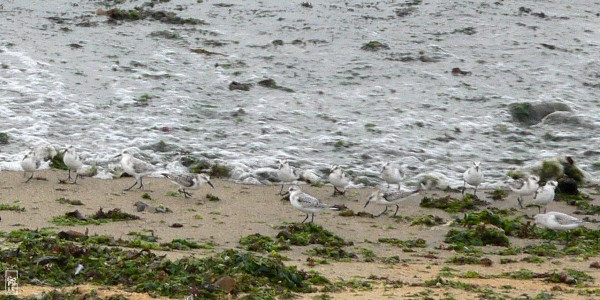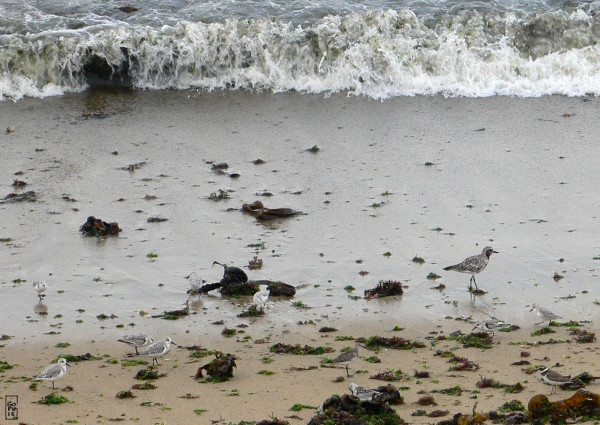Waders on the edge of the water
Limicoles au bord de l’eau

On this sandy shore, there are debris and seaweed floating in the water and left on the sand. It seems a little dirty but if you look closely (you might be first attracted by their chirping as I did), you can see that waders are foraging for insects and other nutritious bits while seagulls look on.
Sur cette côte sablonneuse, il y a des débris et des algues qui flottent dans l’eau et s’entassent sur la plage. Ça peut paraître un peu sale mais si on regarde bien (en étant d’abord attiré par les piaillements comme je l’ai été), on voit que les limicoles sont en quête d’insectes et d’autres morceaux bien nutritifs pendant que les goélands regardent.

These waders are mainly sanderlings I think, with a few little ringed plovers among them. They follow the ebb and flow and stay very close to the edge of the water. As a wave retreats, they advance and forage. Then another waves crashes and they retreat quickly higher up, chirping away.
Ces limicoles sont principalement des bécasseaux sanderlings, je pense, avec quelques petits gravelots parmi eux. Ils suivent le rythme des vagues en restant très près du bord de l’eau. Quand une vague se retire, ils avancent en cherchant dans le sable. Puis une autre vague s’écrase et ils remontent vite, en piaillant.


I noticed one bigger bird among them, a bird I’d never seen before. It’s probably a grey plover, starting to lose its black throat at the end of summer.
J’ai remarqué un oiseau plus grand parmi eux, que je n’avais jamais vu avant. Ça doit être un pluvier argenté, en train de perdre sa gorge noire à la fin de l’été.
Saint-Denis-d’Oléron, Charente-Maritime, France—10/2013